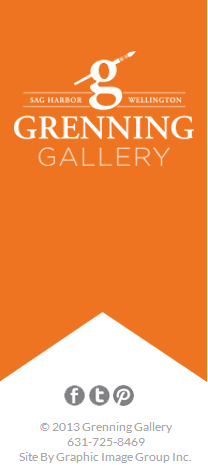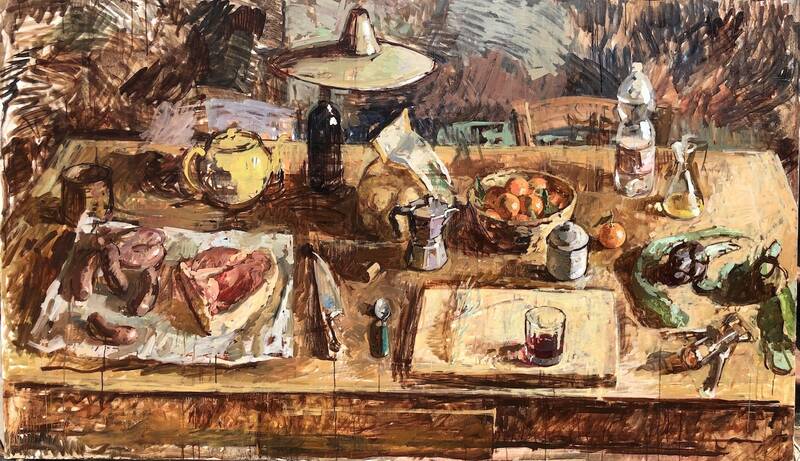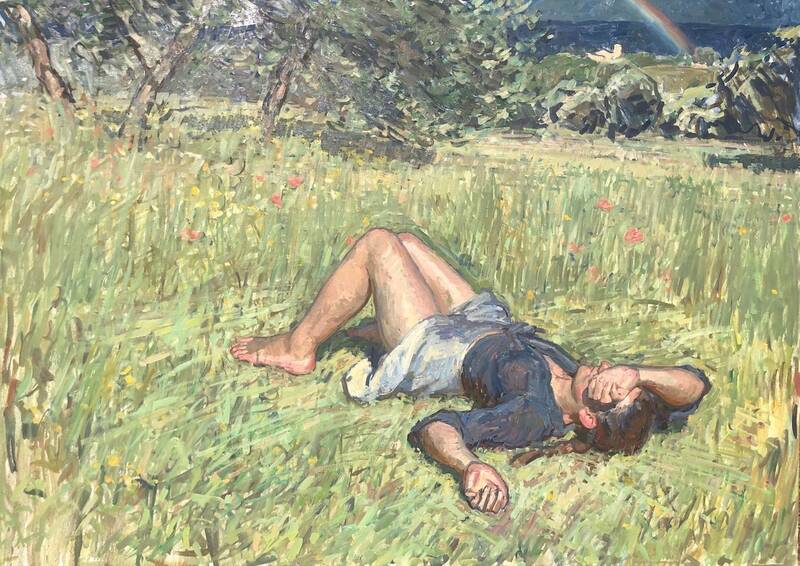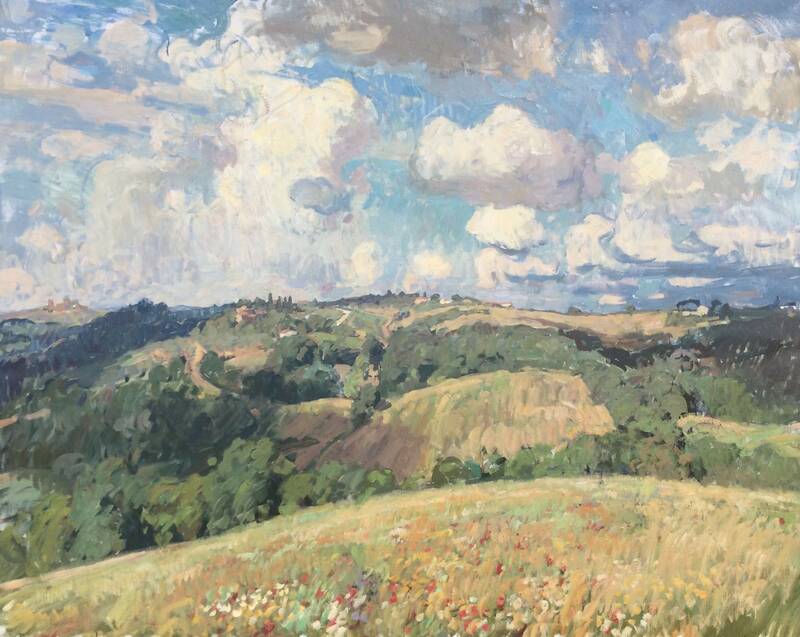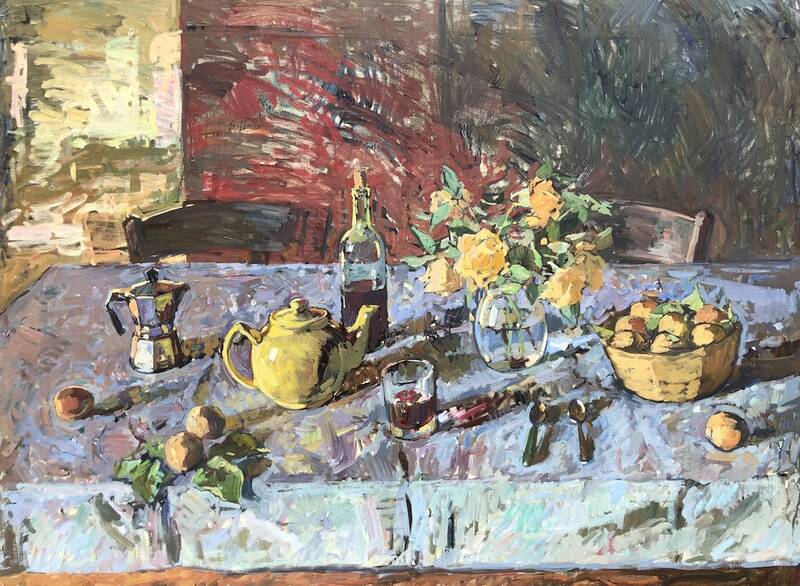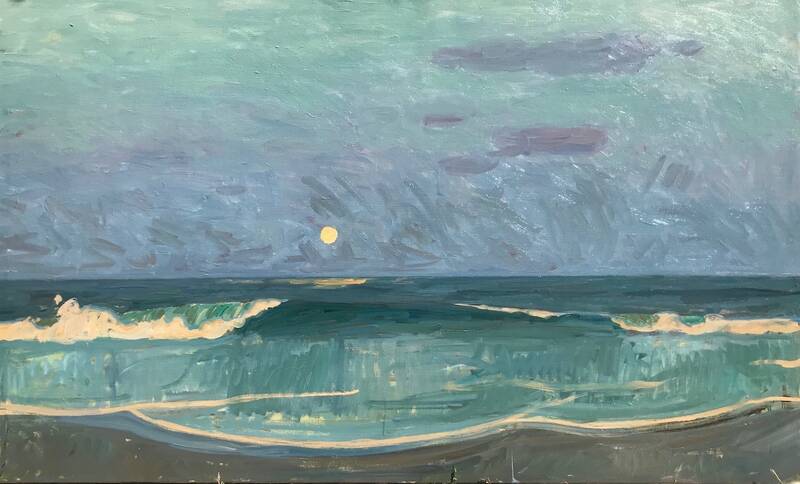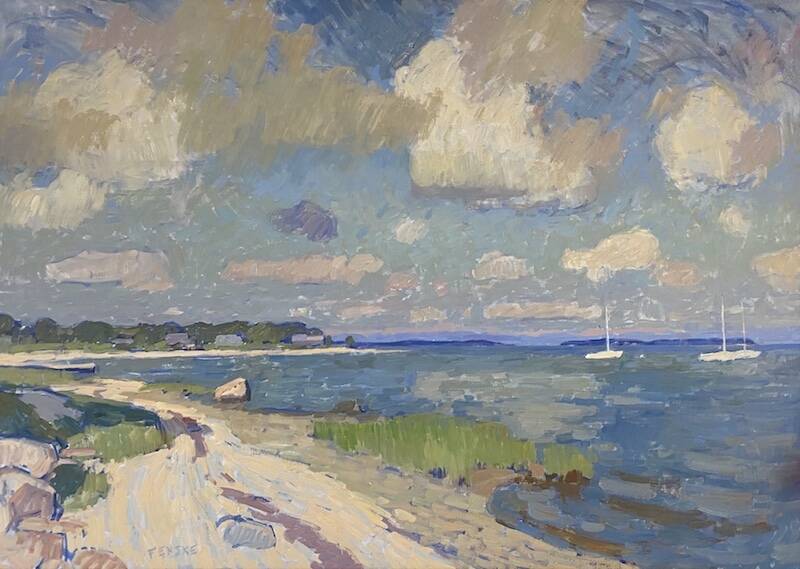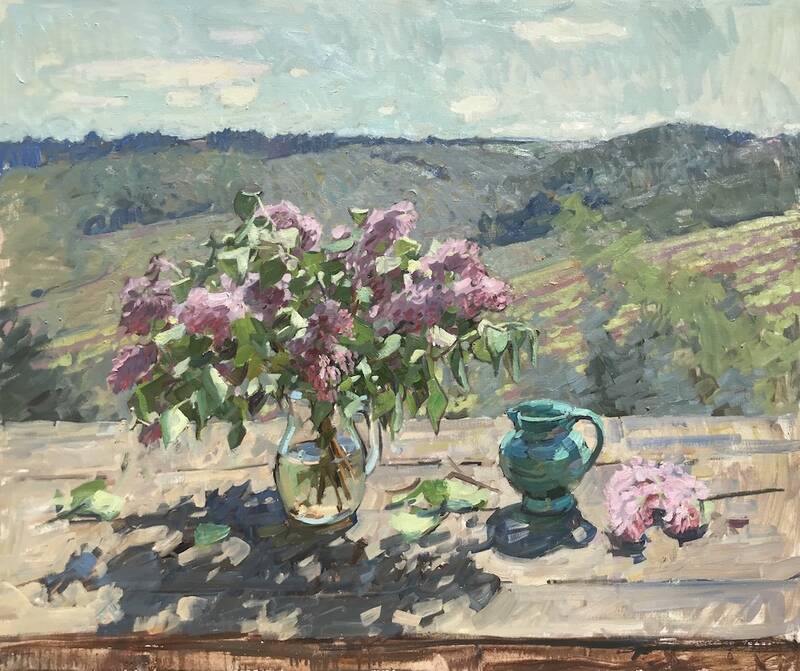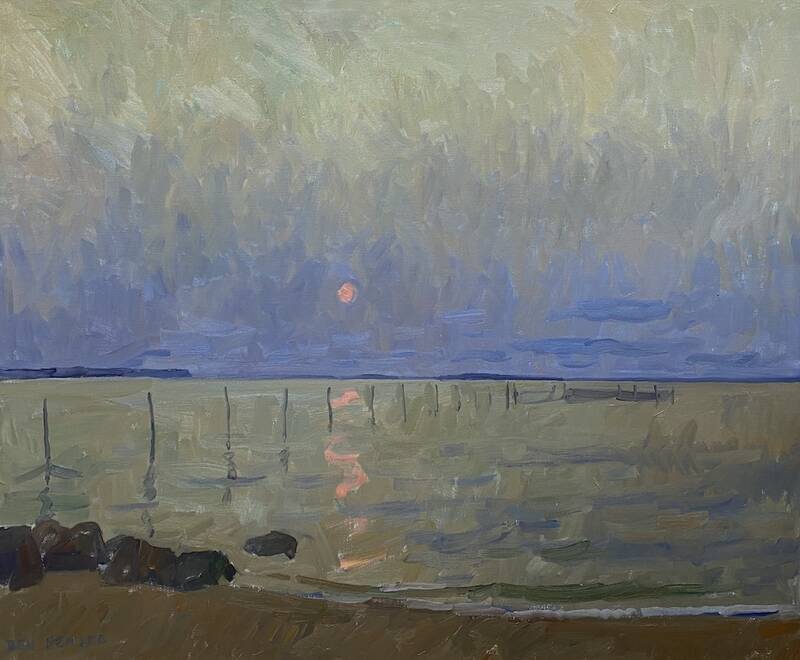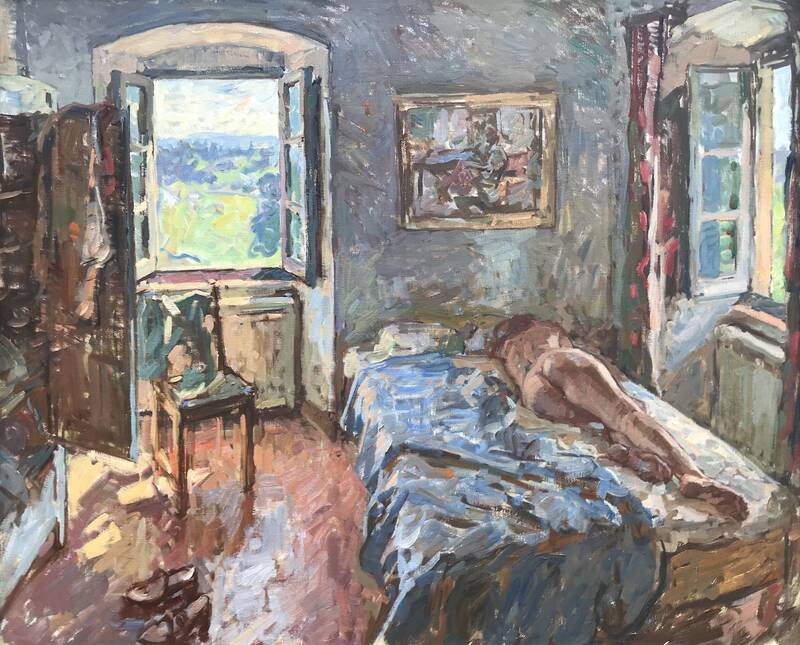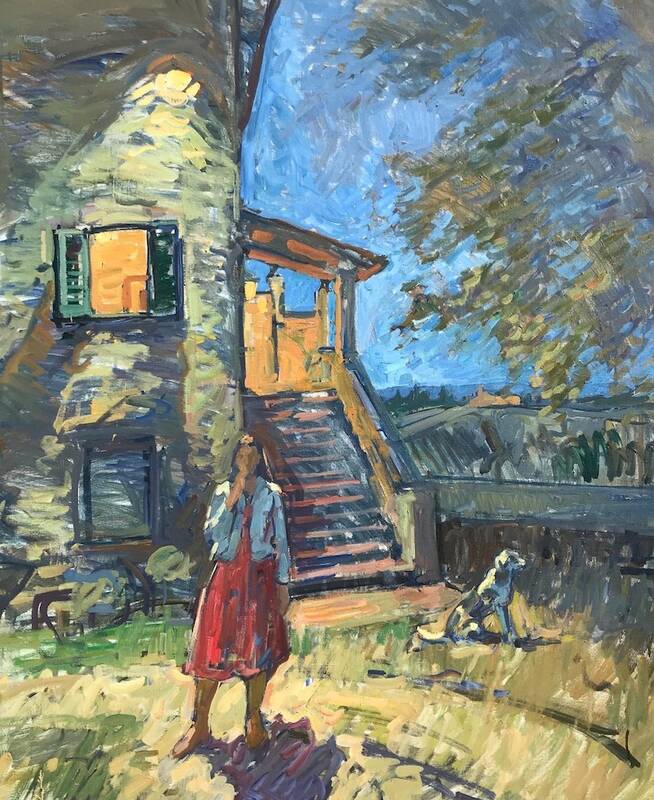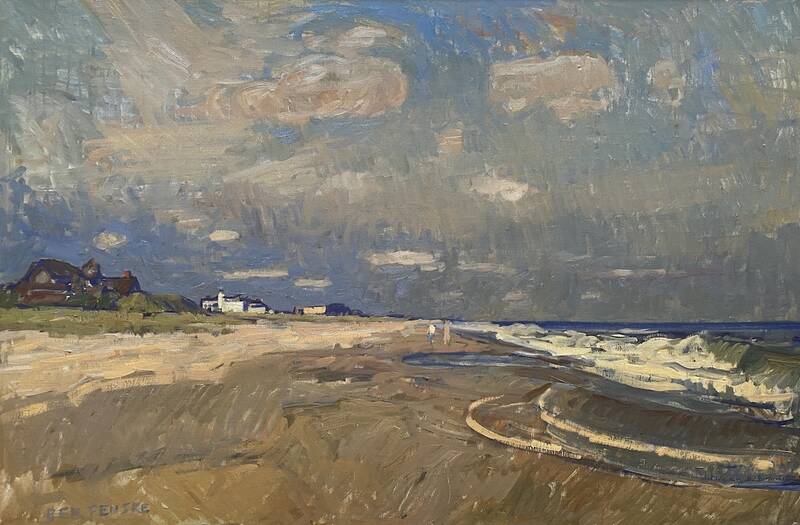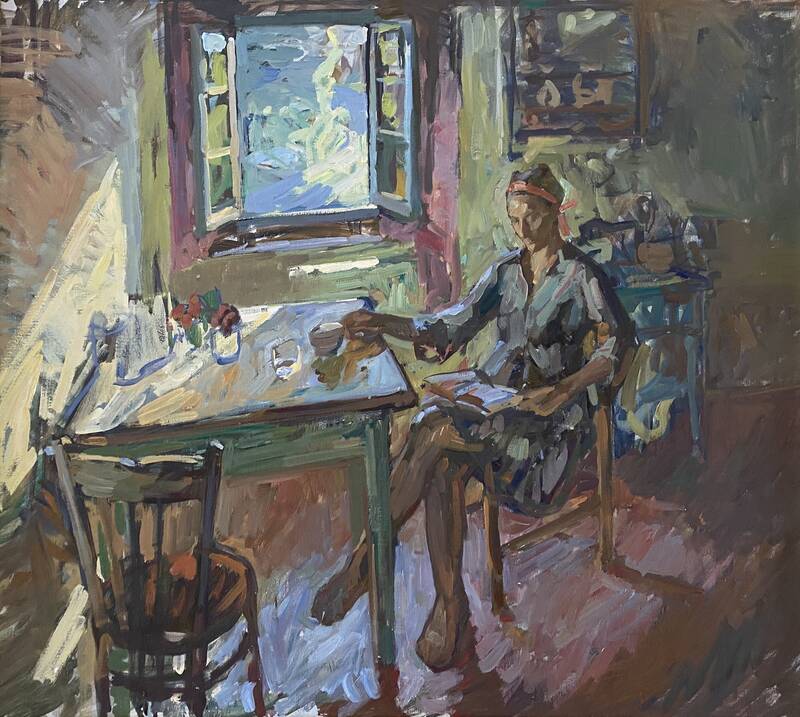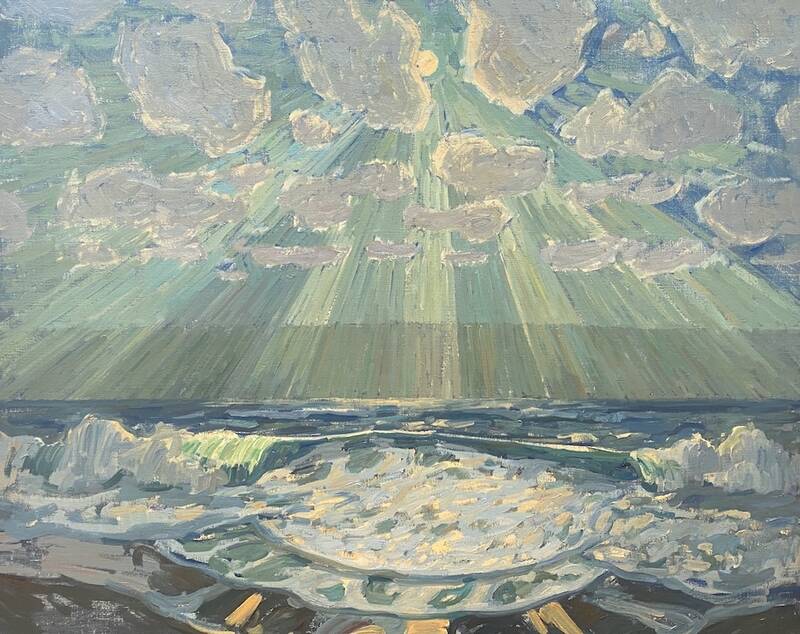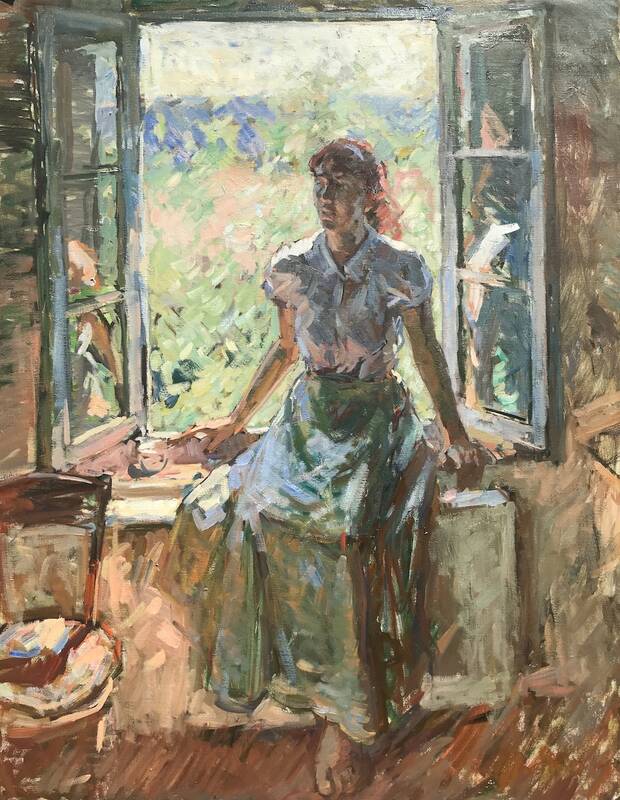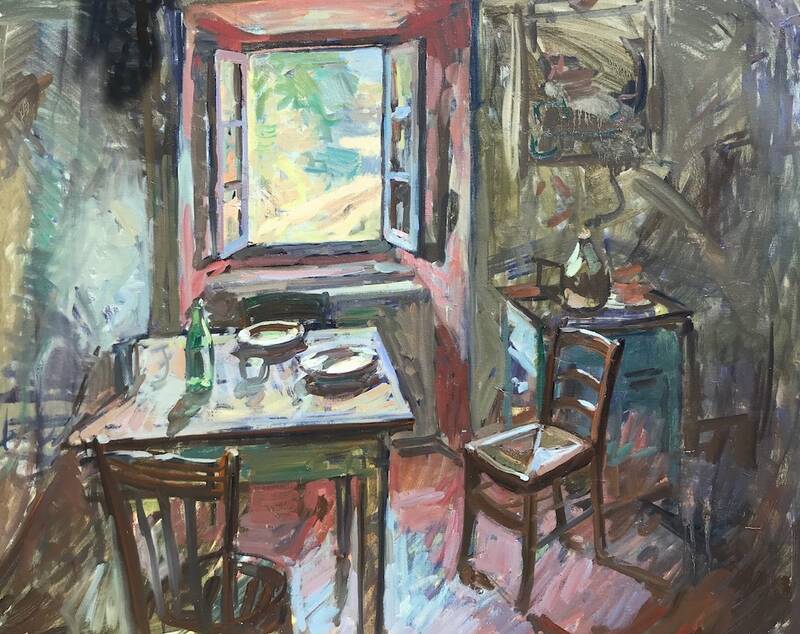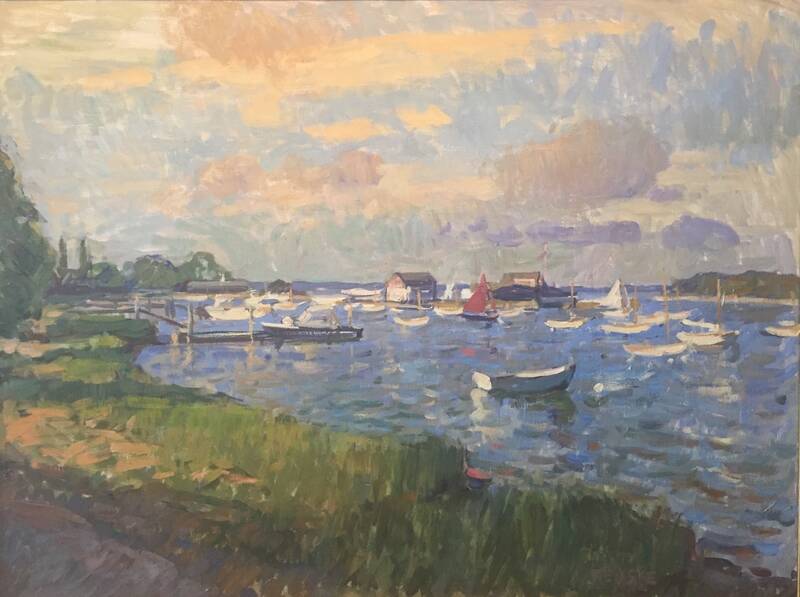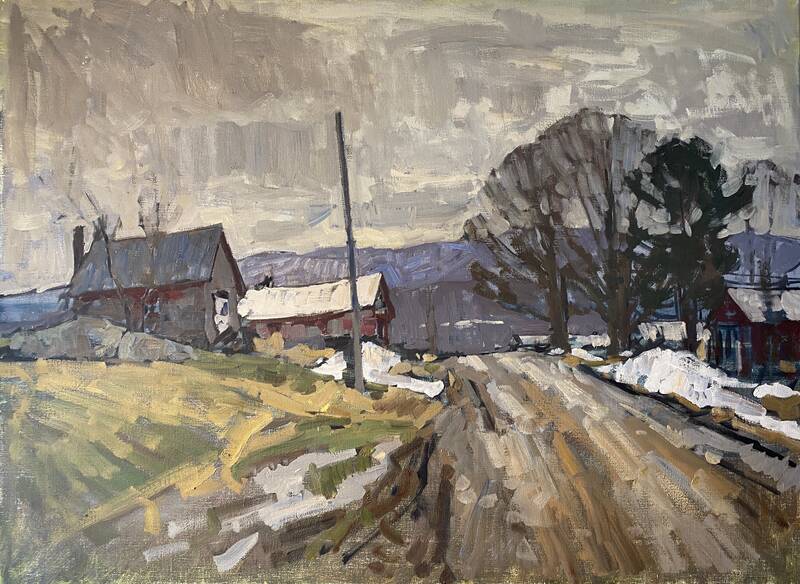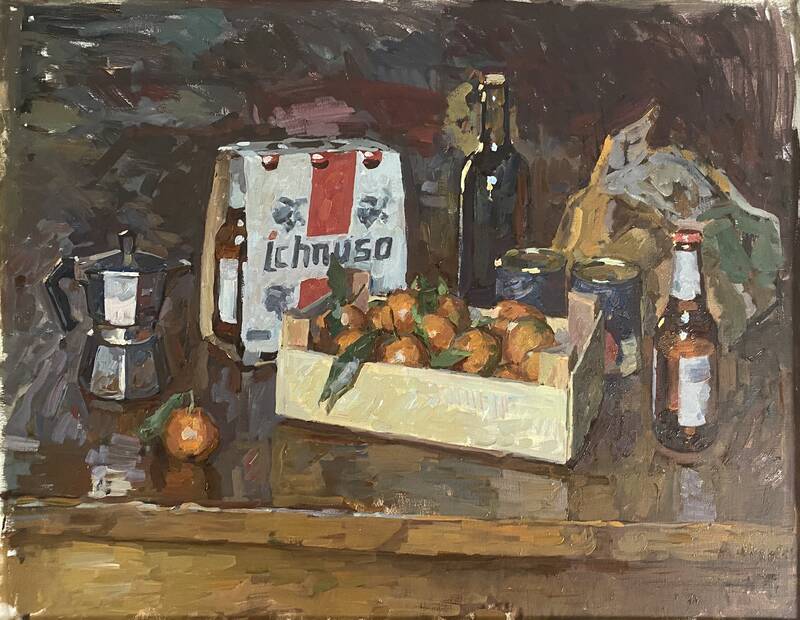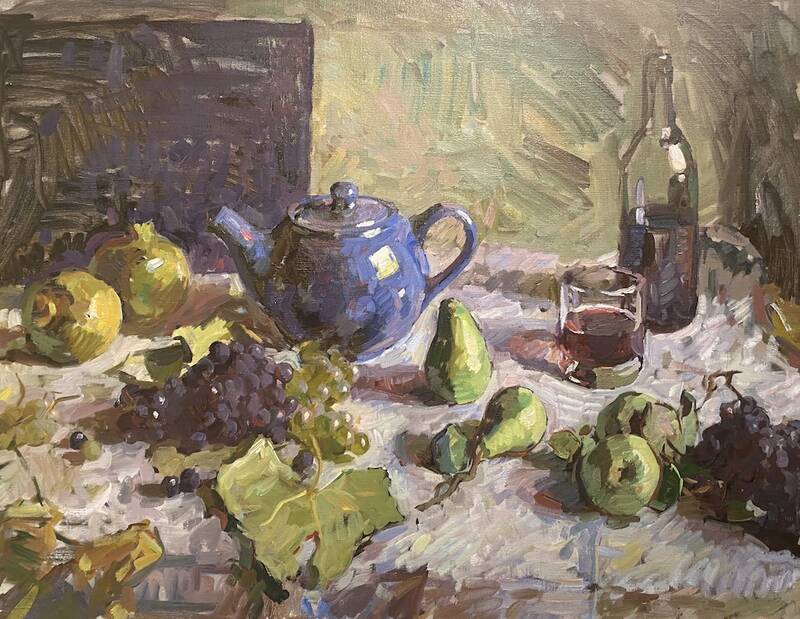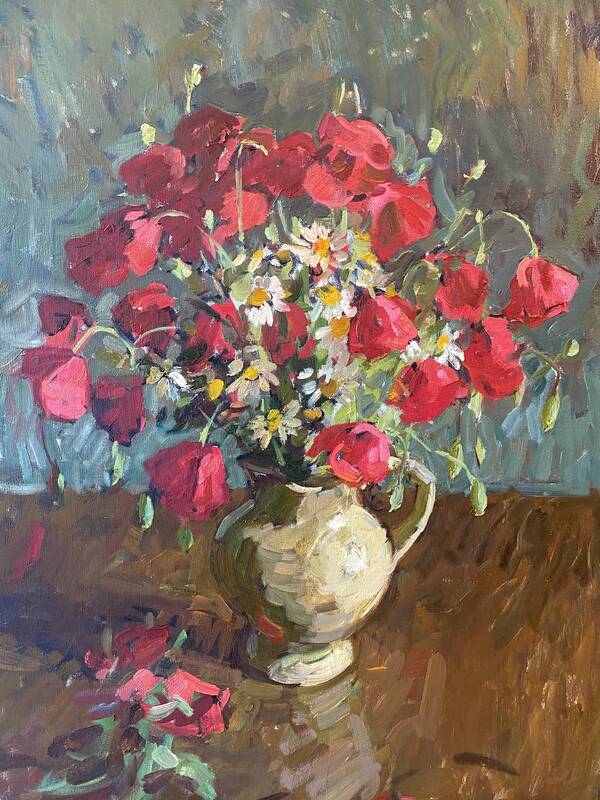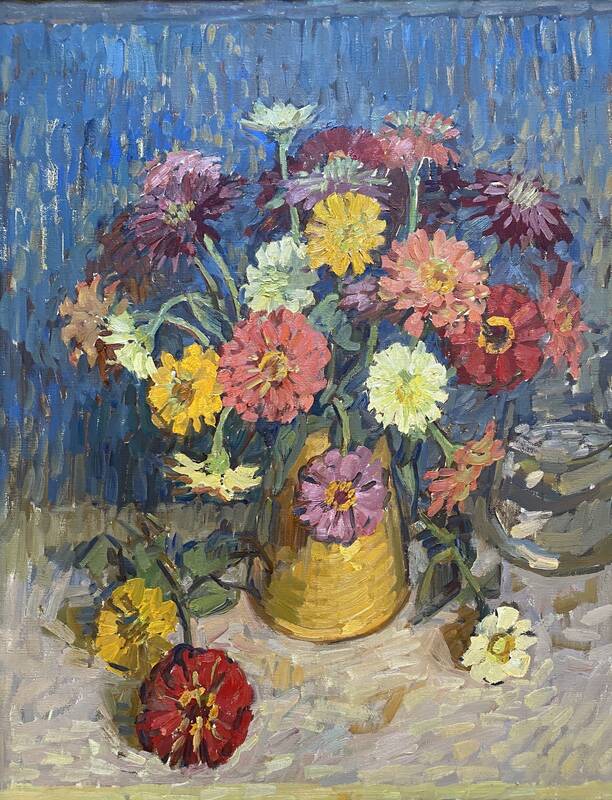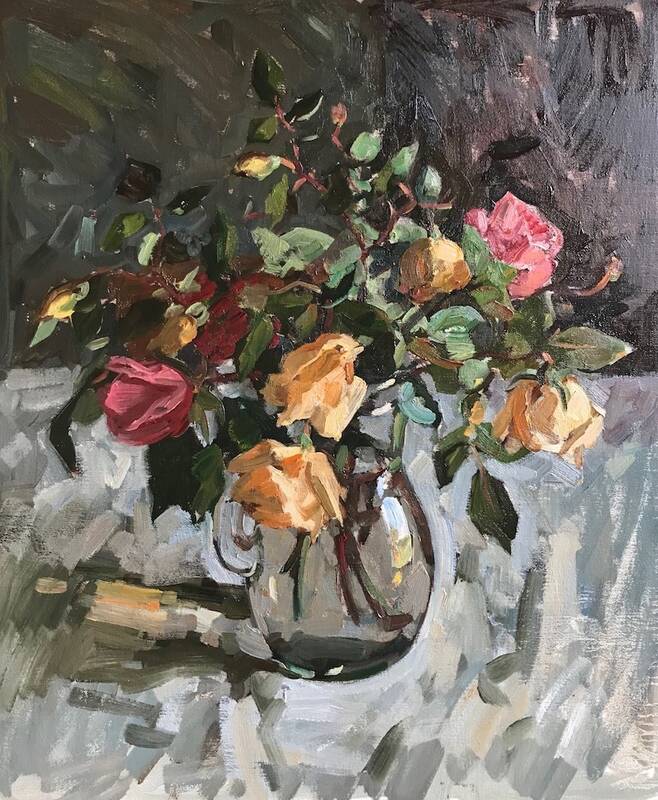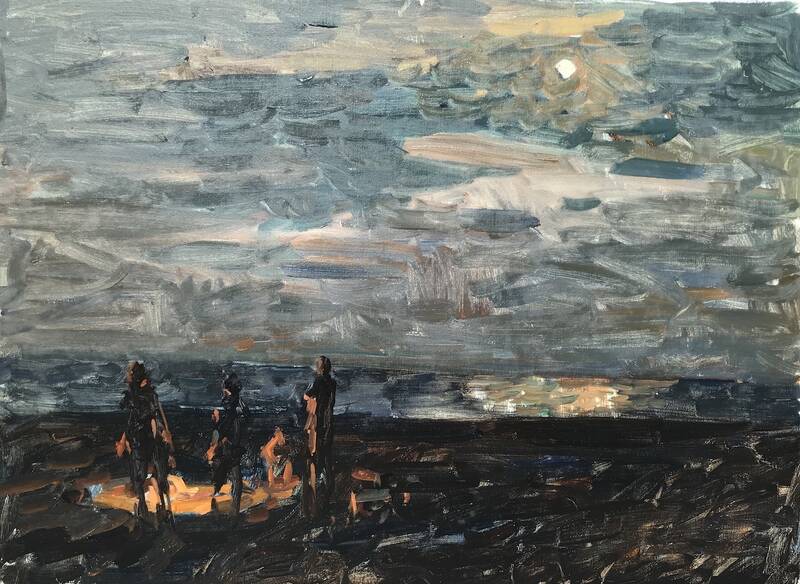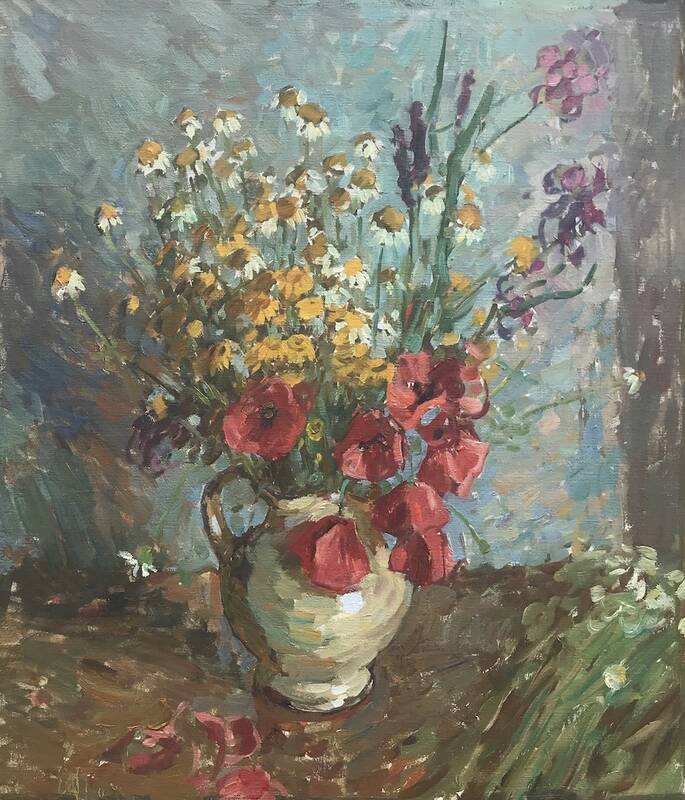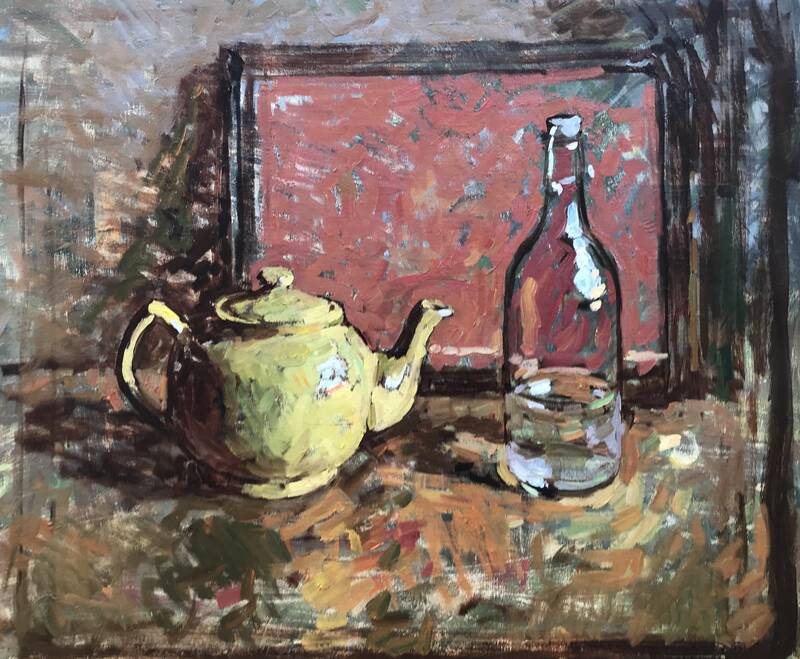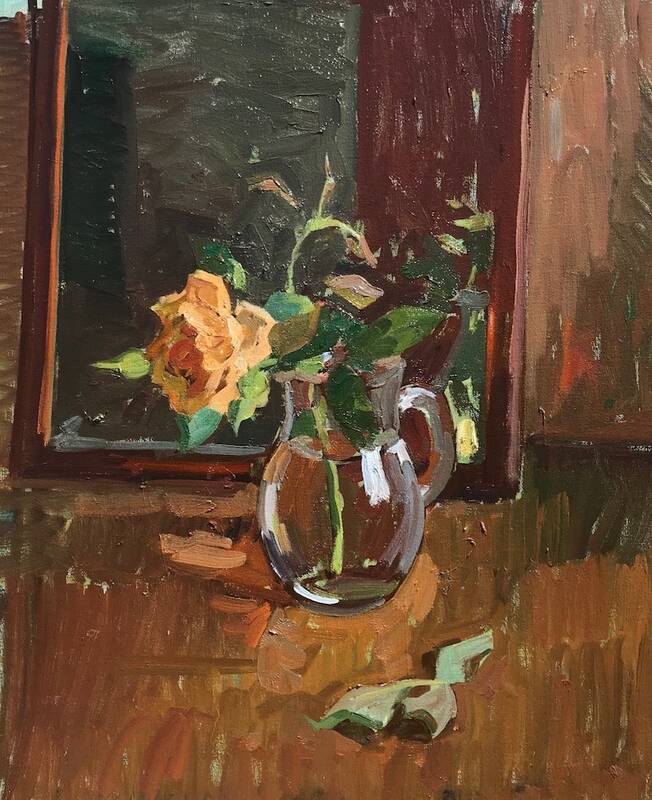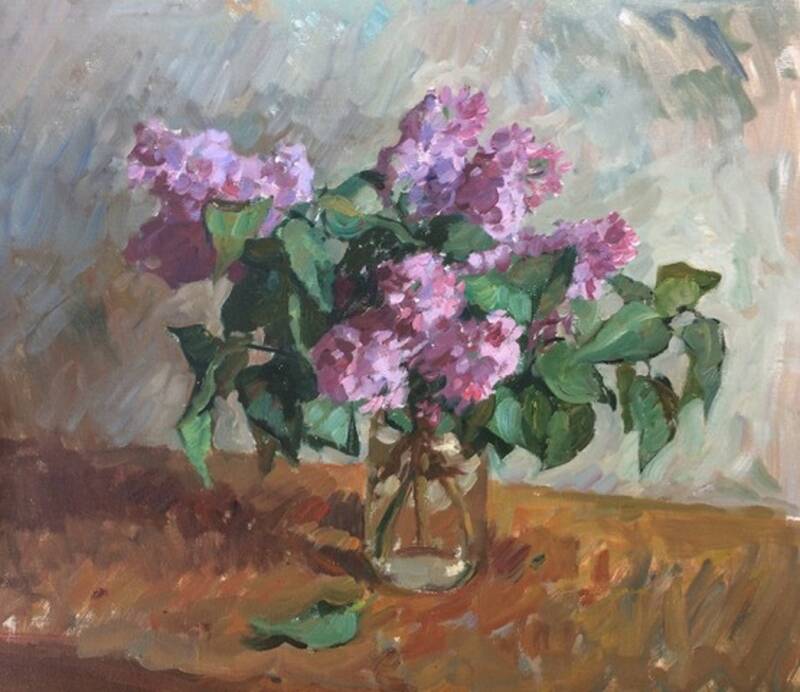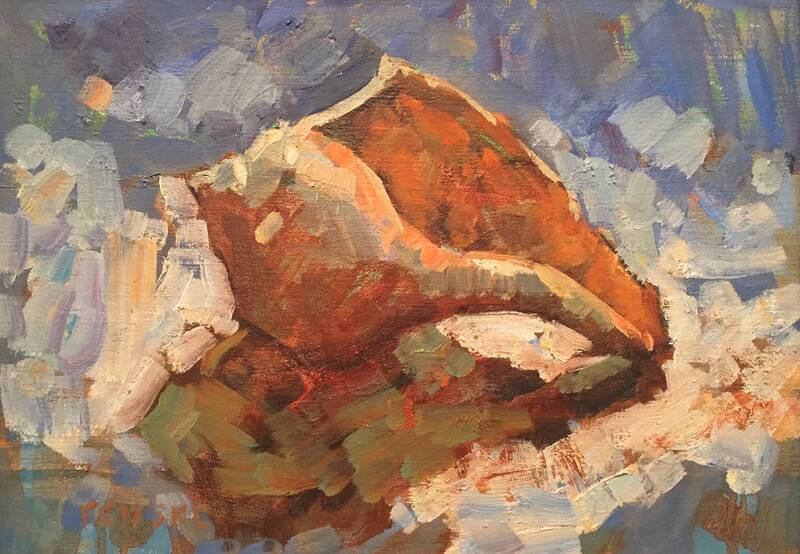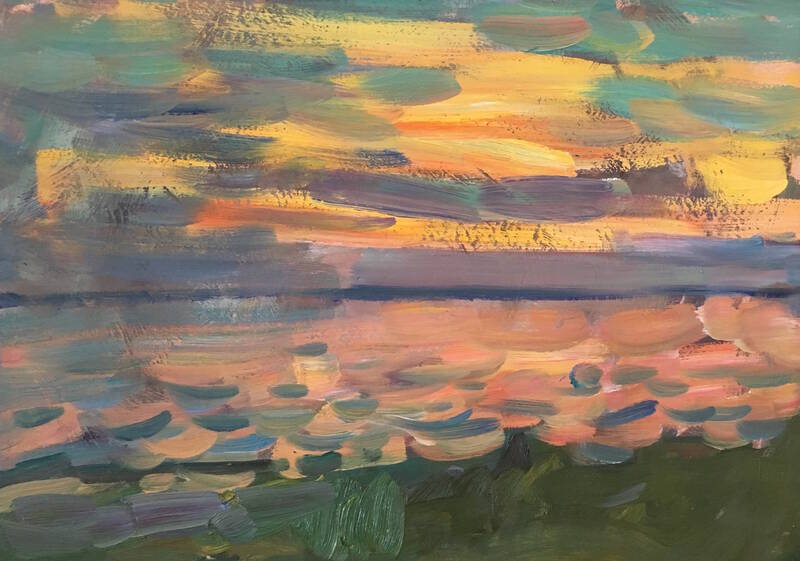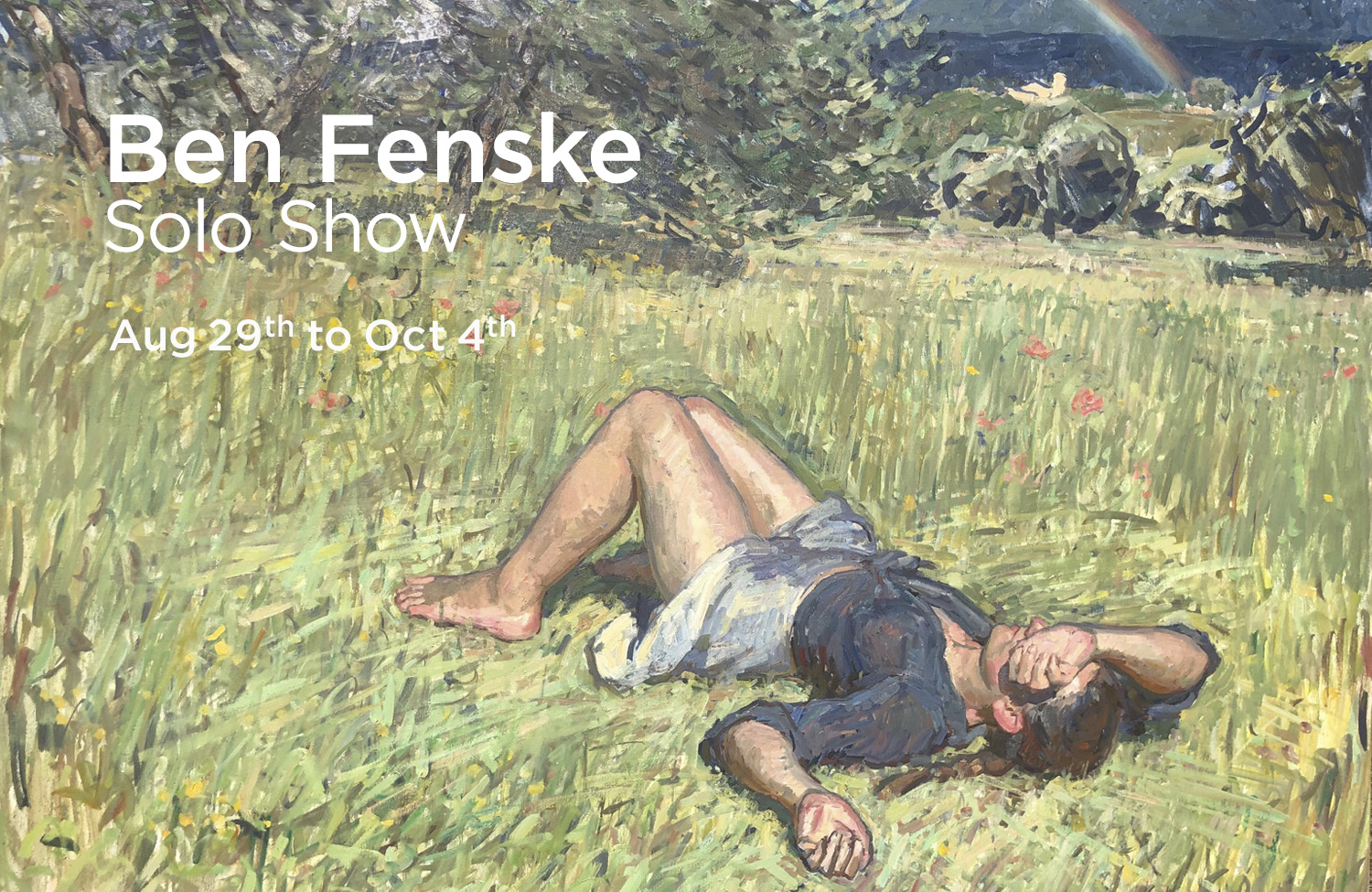
The Grenning Gallery is pleased to announce Ben Fenske, Solo Show which will hang from Saturday, August 29th, through October 4th. Due to social distancing guidelines, we will not be having a typical opening reception. The gallery is now open 7 days a week, 11am - 6pm. We invite you to come into the gallery, or if you'd like a private appointment, simply call 631 725-8469, Text Laura at 631-767-5302 or email us at info@grenninggallery.com.
Scaling up and going deeper into his subject matter are the themes of Fenske's Solo Show this year. Fenske was quarantined as Covid 19 raged around him in Italy. Fenske finally followed his urge to paint larger scale, probably due to the quiet uninterrupted time at his studio and home out in the Italian countryside. Going deeper into his years-long investigation of painting women in an olive grove, this year's "Andra Tutto Bene" is certainly one of the most lyrical in the series. Painting people out of doors was originally inspired by the Russian Tkachyov brother's paintings from the early 20th century of the Russian women working outdoors. Fenske has developed his own very personal riff on this theme, with women laying on a blanket in the grass, in and out of the shade. In this composition we see his girlfriend and fellow painter Amy Florence languidly laying in the tall grass in the full sun. Most interesting however, is that we see the first hint of mysticism in Fenske's work, as he placed a rainbow in the not-so-distant valley directly above the figure. During the height of the pandemic in Italy, Fenske saw signs and banners everywhere that claimed "Andra Tutto Bene", which translates directly to the hopeful message: Everything will be Alright. In an uncharacteristic twist, Fenske is connecting his personal observation and experience with the broader community.
"Sturgeon Moon, Gibson" is another break-through painting for Fenske. Here the inspiration is from directly observing nature, but clearly, he is launching the viewer off into a magical realism plane. He has uncharacteristically centered the moon at the top edge of the painting and mathematically gridded out the moon beams streaming from behind the clouds, almost like a pre-renaissance icon. He has also centered the seeping wave directly below the moon, creating a repeating half circle in the center of the foreground. The tonal shifts and color are perfectly keyed to nature, yet the overall painting flattens out with his very sophisticated use of a naive solution for the expansive moonlit sky between the sea and clouds.
"Fresh Apricots", is another large-scale painting that is a further investigation and clarification of last year's popular "Spring Still Life". Drawn to the orange and yellow color against the blue tablecloth, Fenske played with the same elements in a subtle repeating pyramid composition, versus the Steelyard composition he often employs with Still Life paintings.
Speaking of the steelyard design, Fenske's major "Table, Torricella," 47 x 79 inches is a very intimate painting of Fenske's life AND his process. This is the third in a series of Still life paintings of his kitchen table. This is a bigger one, including more of the objects from the house that hold meaning and purpose for him. He created this work and then left for the USA to attend his Fenske and Friends show here in February and then he went on to paint in Vermont. Originally, he had intended to "fill in" the painting upon returning, but when he took it out and looked at it, he decided that he had made his point, and that he didn't need to go back into the paintings. Interestingly, he said that the abstract composition was what he was challenged by, and once he got that down, he felt that he didn't need to go back into the painting. Another artist walked in just as we were hanging it and he was blown away by the intimacy, playfulness and irreverence of the work. He pointed out that Fenske was inviting us into his actual life, and by leaving it in the more abstract stage the viewer is also invited into his process. Also, we noticed that there is a half full glass of wine in the lower right-hand part of the painting, which is a clear invitation to the viewer to join him!
"Twilight, Family" 36 x 43 inches, is another painting of his house, yet this one features his girlfriend and the neighbor's dog in a compelling composition, which layers unnatural orange and yellow electric lights from the kitchen and porch against the coming evening's deepening dark blue sky. The abstract brush strokes and color recall Van Gogh, but the emotional energy harkens more to Edward Hopper. Fenske accomplishes this with the single female figure in the yard looking directly at the viewer while the dog's figure is further back and in profile, looking off in another direction. Blues, greens, reds and yellow single a soulful song in this rare vertical Twilight portrait of his mid pandemic hunkered down home.
In an expansion of his still life repertoire, Winter Still Life and a September Still Life, (27.5 x 35.43 inches each) we see how Fenske's reputation for painting anything that catches his eye is borne out. The six pack of beer next to the clementine's must have brightened up his mid-winter stay out in Chianti. Also, the abstract shape of the grape leaves, the deep blue teapot against a deep blue background , and the chunky gorgeous pears frolicking across the com[position make September Still Life an instructive painting to those who are tasked with painting a pear still life originally.
Backlit figures in an interior, a cornerstone to Fenske's oeuvre, is also revisited this year with "Tea, Reading" and "Girl, Morning". Each of these are painted in his home, during the pandemic. The bright blue light streaming past the figure in the latter painting is smaller more intimate look at this subject and feels stronger and more graphic than the earlier works.
Finally, although the wildflowers didn't grow as bountifully this past spring, we did get four more florals by Fenske, notably the "Poppies and Daisies" and "Wildflowers," which again, are strong enough to stand up to any of the great florals throughout art history. In the latter, the red poppy blossoms wave and nod against a teal and blue background, with brighter white and yellow flowers punching forward. Fenske pays equal attention to the foreground and background reminding us of the impermanence of beauty and life, in his narrative and his process.
